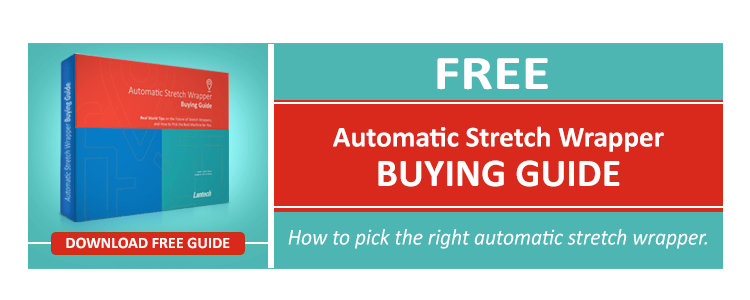
Life in a JiT supply chain
Your company, like most, probably manages according to known priorities. Every business has so many ongoing sales conversations that if you built capacity to satisfy the sale pipeline you’d have an enormous factory that was rarely all that busy.
Because we all have so many conversations about possible contracts, expected new orders, and theoretical capabilities, we tend to ignore them over time.
And then the inevitable happens – one works out! Suddenly the fire drill accelerates to full speed -contingency planning meets the reality of lead-times and the casualty is flexibility.
When that happens, compromises often result in equipment planning, design, and manufacturing that could have been avoided with some advance planning.
Why you’re buying a new stretch wrapper
We know that many companies add stretch wrapping capacity for one of several reasons:
- to reduce product damage
- to upgrade existing equipment to reduce operating cost, improve OEE, or add technology enhanced capabilities
- to provide additional capacity
When you’re buying to provide capacity, the reality is that it’s often against a new contract which has been signed and against which you’re under pressure to begin producing. The stretch wrapper is often one of the last items to order – just as it’s physically one of the last machines in the production line.
So often the discussion around new stretch wrapping equipment sounds like, “We need another machine like SN XXXX. I need a price and a lead time.” After a short conversation generally the price isn’t a concern, but the lead time….”Oh, I figured it was two weeks!” Well, sometimes the lead-time is two to three weeks depending on the system.
Automatic lines, though, can take longer. And the squeeze which results often costs companies the opportunity to buy the right technology today – they end up taking a duplicate of what they’ve bought in the past, or what can be produced quickly.
Aside from giving project managers angina, there are long term costs to cutting these corners.
Buying the right machine today
Today’s stretch wrapping equipment looks superficially similar to its predecessors of a decade ago. But there are substantial differences in controls, operation, data collection and interpretation, and factors around OEE.
The basic premise of efficient wrapping is to apply the least amount of film as quickly as possible to each load, while ensuring it is safely delivered to its destination. That sounds simple, but solutions to pesky issues like film breaks, applying film consistently around load corners, and automatically adapting wrap patterns to different load types are examples of problems which technology has largely overcome just in the past couple years. Ordering a duplicate of a seven-year-old machine to reduce your lead-time could cost you those improvements.
And it’s not just evolving wrapper technology that you should consider. Warehouse management system (WMS) integrations are on almost every wish list but they take some time for proper design and programming. Integrations with other equipment, particular pass and ceiling heights, special lengths of conveyor sections, and other mechanical factors may be important for seamless integration, but could extend the delivery time for a wrapper.
What will you have to compromise on the altar of quick delivery?
Advantages to waiting until the order is booked
Of course there’s a flip side. If you wait to order additional stretch wrap capacity until your customer’s order is in hand, you’ll avoid the challenge of unplanned requirements and shifting specifications.
You’ll also sidestep the occasional situation where plant layouts are shifted to accommodate new product flows – sometimes creating new integration challenges.
And you’ll also avoid the rigorous justification process most companies require for purchasing capital equipment based on operational improvements vs. capacity increases.
Advantage….research
Like much in business there isn’t a simple clear cut answer. It’s different for every company in every situation. But there are advantages to proactively improving operations.
So do yourself and your team a favor. At least briefly research the equipment capabilities that are available today and understand how they could impact your current operation and maybe address limitations which have reduced operating efficiency or caused you to turn down certain customer requests.
At least you’ll be better prepared for the next call from sales or marketing asking “How quickly could we ramp up to produce XXXX/day?” And realistically you might just find that some of the low-grade frustrations you’ve had could be reasonably fixed with a pretty reasonable pay back. Download our free Automatic Stretch Wrapper Buying Guide to dig a bit deeper.
This post was published on October 6, 2016 and updated on October 6, 2016.
October 6, 2016

